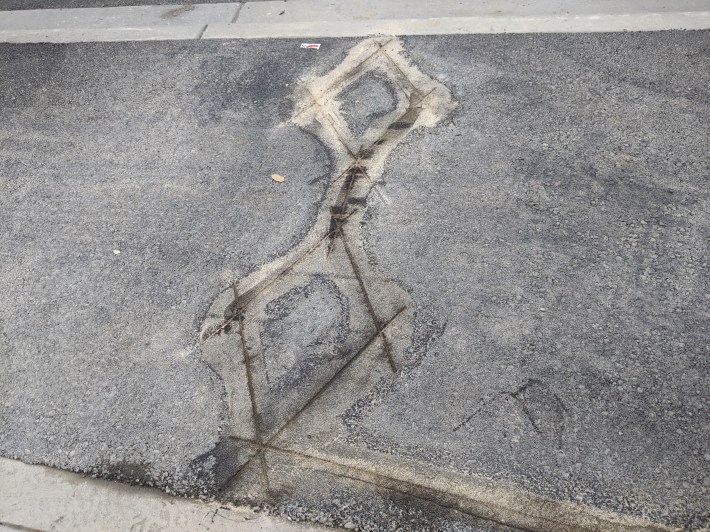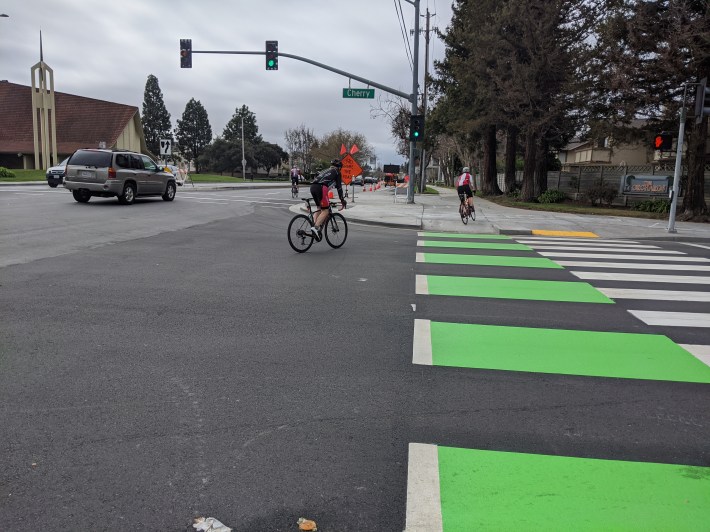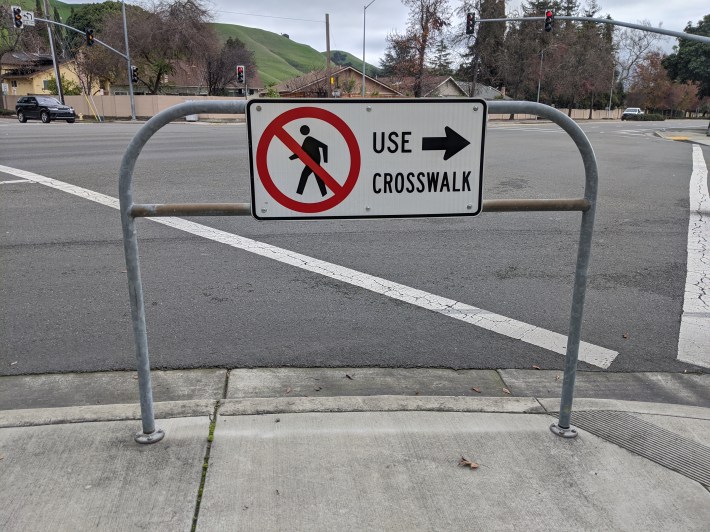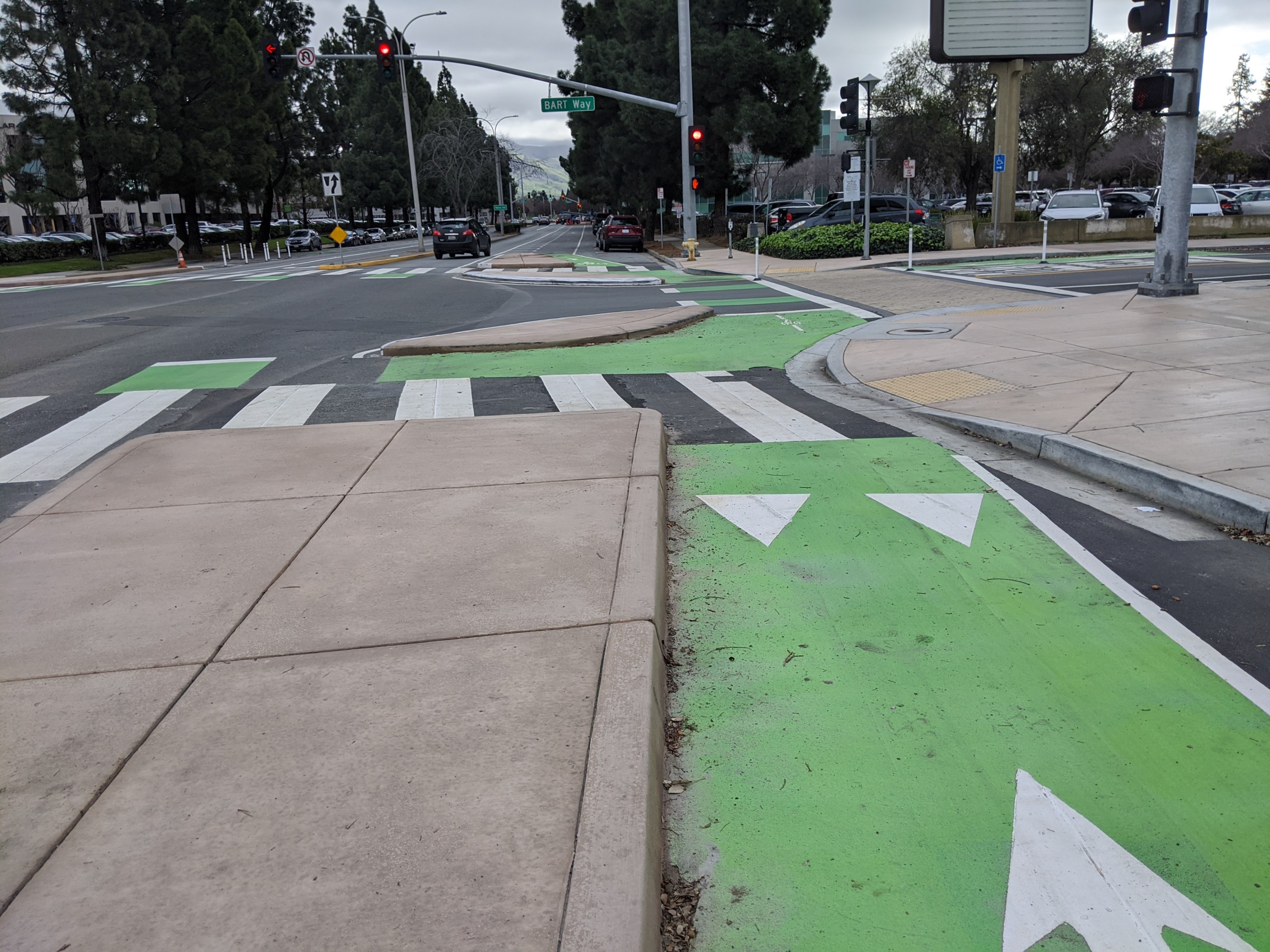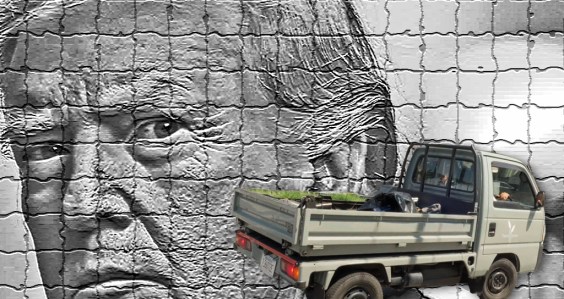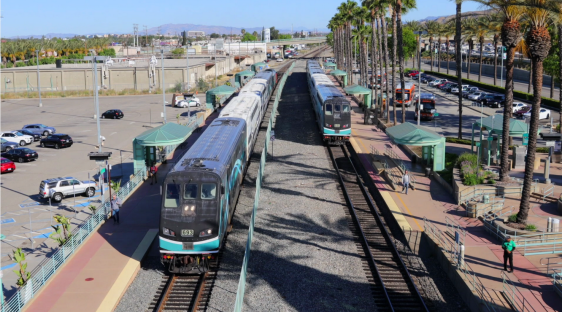Note: GJEL Accident Attorneys regularly sponsors coverage on Streetsblog San Francisco and Streetsblog California. Unless noted in the story, GJEL Accident Attorneys is not consulted for the content or editorial direction of the sponsored content.
Commuters who use Fremont's BART station are getting some top-class, Dutch-style, raised, separated-and-protected bike lanes and protected intersections on 1.3 miles of nearby Walnut Street.
Yes, in suburban Fremont.
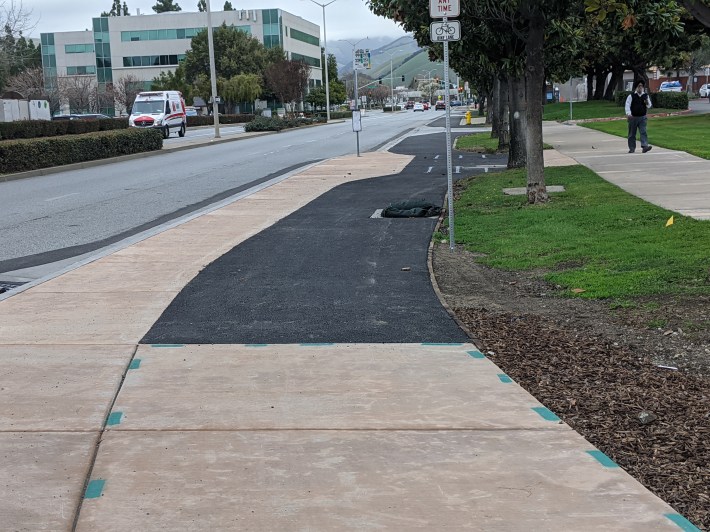
The project is supposed to be finished sometime in the spring, but we took a peak at the progress. And it's very impressive and relaxing to ride on, despite the big, four-lane road it's part of (the lead picture is technically from a small adjoining project at the BART station that connects to it, just to show what the finished intersections will look like, paint and all).
From the Fremont City page describing the Walnut Avenue Bikeway project, between Mission Boulevard and Paseo Padre Parkway. The Walnut Avenue project will (and pretty much already has at this point):
- Install Class IV (raised) asphalt concrete protected bikeways on 1.3 miles of Walnut Avenue on both sides of the street
- Install a protected intersection with signal modifications at Walnut Avenue and Paseo Padre Parkway
- Install a protected intersection with signal modifications at Walnut Avenue and Civic Center Drive
- Install a pedestrian flashing beacon mid-block crossing signal on Walnut Avenue at the BART driveway that provides access to the BART Station and connects up to the Class I trail and the nearby development
Here's a look at the protected intersection at Walnut and Gallaudet. Note the intersection conflict zone--where cyclists and motorists have to share space--is minimized and was the first thing painted. Let this be a lesson to other Bay Area cities, that seem to either paint the crossing last or not at all.
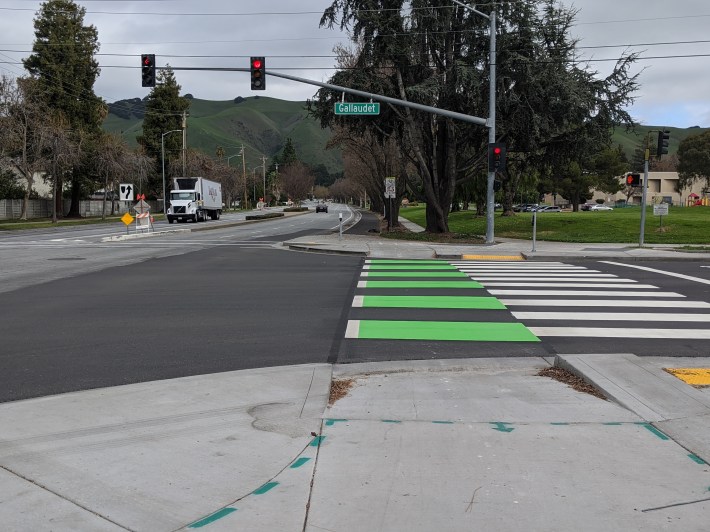
Here's a schematic of the protected intersections at Walnut/Paseo Padre and Walnut/Civic Center Drive.
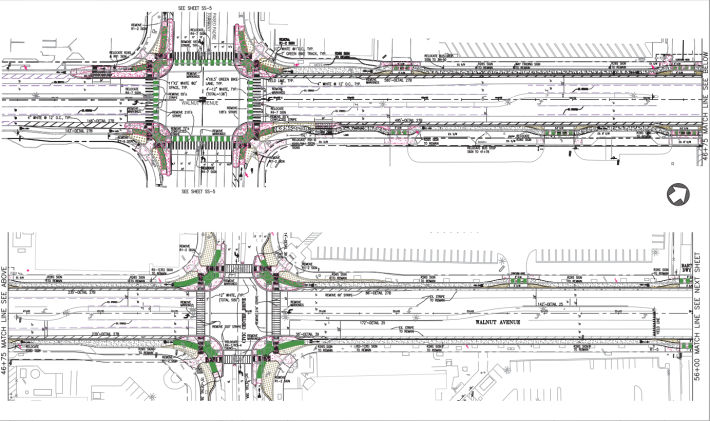
Below is a shot of where the BART tracks cross over Walnut, to give those not familiar with the area a sense of how this feeds cyclists to and from transit (the worker riding the cherry picker is putting the finishing touches on a lighted bike and pedestrian crossing for people on the far side of the street to reach the station more safely). The station is just off to the left and directly accessible from the protected lane on the opposite side of the street.
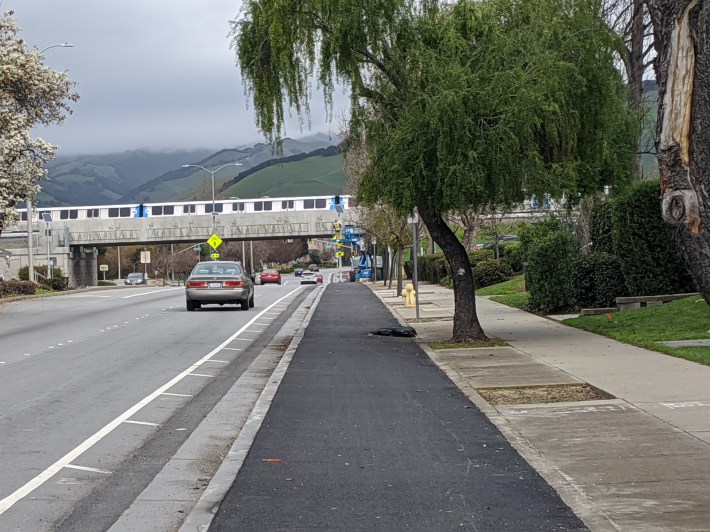
"Fremont took the East Bay by storm in 2015, becoming the first city East Bay city to adopt Vision Zero. Now, the city has a bold new Bicycle and Pedestrian Master Plan and is rolling out protected bikeways, innovative intersections, and a new bike share system," wrote Bike East Bay in a post about the project.
"It will look much better when it's painted. All the major driveways will get green paint," added Andreas Kadavanich, with Bike Fremont, in a phone call with Streetsblog.
Tomorrow, San Francisco will ban private cars from driving down Market Street. This shows that in the center of big cities it's possible to take bold actions. And Fremont has shown that the same kind of bold actions are possible in traditionally sprawling, car-centric suburbs. And it also shows that on big, multi-lane roads like this, "mixing zone" intersections are dangerous and inappropriate and need to be replaced with protected intersections.
In other words, cycling can be a safe, easy way for people of all ages and abilities to shop, get to school, connect to transit, etc. The designs for safe infrastructure are not mysterious. Other countries have already done the experiments and figured out best practices. It's just a question of having the political will to do them and do them right. This holds true in the big city, suburbs, small towns, the country, and everywhere in between.
"In addition to providing safe access to large employers and the Fremont BART station, the project will serve as an example to other cities working toward raised bikeway projects," wrote Bike East Bay's Susie Hufstader, in an email to Streetsblog. "As more jurisdictions build out permanent protected bike lanes, it will be important that designers in our region learn from each other and continue to refine design details and best practices in accessibility, transit stops, intersection operations, and bikeway separation styles. We are working with the City of Fremont facilitate opportunities for local staff throughout the region to learn from the Walnut Avenue design."
A special thanks to Kadavanich, Hufstader, and all the hard-working advocates at Bike Fremont and Bike East Bay.
More photos of Fremont's new bike infra below:

